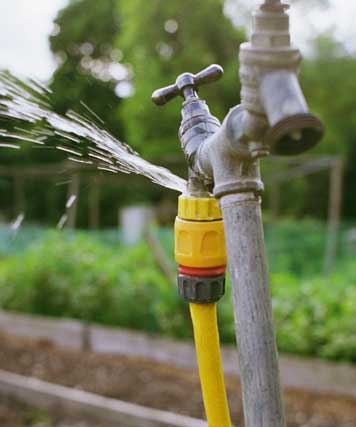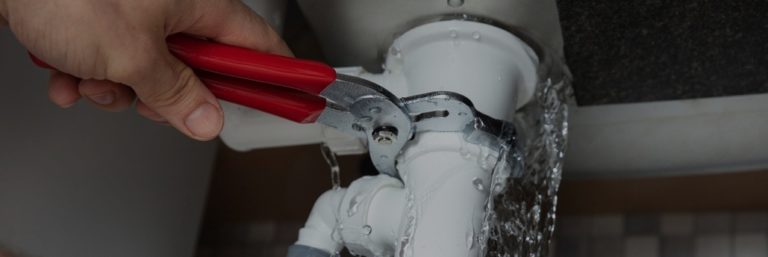Just how do you feel when it comes to Hacks to detect leaks?

Early discovery of leaking water lines can reduce a possible catastrophe. Some tiny water leaks might not be visible.
1. Check Out the Water Meter
Every home has a water meter. Examining it is a guaranteed way that aids you uncover leakages. For starters, turn off all the water sources. Make sure no person will flush, utilize the tap, shower, run the cleaning equipment or dishwasher. From there, go to the meter and watch if it will change. Since no one is using it, there should be no movements. If it moves, that shows a fast-moving leakage. Furthermore, if you find no changes, wait a hr or more and also examine back once again. This suggests you may have a slow-moving leak that can even be underground.
2. Check Water Intake
Assess your water costs and track your water consumption. As the one paying it, you need to observe if there are any kind of inconsistencies. If you identify sudden changes, in spite of your consumption coinciding, it means that you have leakages in your plumbing system. Keep in mind, your water expense ought to fall under the exact same range every month. An abrupt spike in your expense indicates a fast-moving leak.
At the same time, a steady boost every month, despite the exact same behaviors, reveals you have a slow leakage that's also slowly escalating. Call a plumber to thoroughly inspect your residential or commercial property, especially if you really feel a cozy location on your floor with piping beneath.
3. Do a Food Coloring Test
30% comes from bathrooms when it comes to water usage. Test to see if they are running properly. Drop specks of food shade in the storage tank and also wait 10 mins. If the shade in some way infiltrates your bowl throughout that time without flushing, there's a leakage in between the storage tank and also bowl.
4. Asses Exterior Lines
Don't forget to inspect your outdoor water lines as well. Should water leak out of the link, you have a loose rubber gasket. One tiny leakage can waste bunches of water and increase your water bill.
5. Evaluate the scenario and also inspect
House owners ought to make it a routine to check under the sink counters and even inside cupboards for any kind of bad odor or mold growth. These two red flags suggest a leakage so punctual attention is required. Doing routine examinations, also bi-annually, can conserve you from a significant problem.
A lot more notably, if you know your home is already old, keep a watchful eye on your heating units, pipes, pipelines and so on. Look for discolorations as well as deteriorating as a lot of home appliances as well as pipelines have a life expectancy. They will certainly additionally normally degrade as a result of damage. If you believe dripping water lines in your plumbing system, do not wait on it to rise. Call an expert plumber right away so you don't end up with a terrible mess in your house.
Early detection of dripping water lines can reduce a potential calamity. Some small water leakages might not be noticeable. Checking it is a guaranteed means that helps you discover leakages. One little leak can squander bunches of water as well as increase your water bill.
If you think dripping water lines in your plumbing system, do not wait for it to intensify.
WARNING SIGNS OF WATER LEAKAGE BEHIND THE WALL
PERSISTENT MUSTY ODORS
As water slowly drips from a leaky pipe inside the wall, flooring and sheetrock stay damp and develop an odor similar to wet cardboard. It generates a musty smell that can help you find hidden leaks.
MOLD IN UNUSUAL AREAS
Mold usually grows in wet areas like kitchens, baths and laundry rooms. If you spot the stuff on walls or baseboards in other rooms of the house, it’s a good indicator of undetected water leaks.
STAINS THAT GROW
When mold thrives around a leaky pipe, it sometimes takes hold on the inside surface of the affected wall. A growing stain on otherwise clean sheetrock is often your sign of a hidden plumbing problem.
PEELING OR BUBBLING WALLPAPER / PAINT
This clue is easy to miss in rooms that don’t get much use. When you see wallpaper separating along seams or paint bubbling or flaking off the wall, blame sheetrock that stays wet because of an undetected leak.
BUCKLED CEILINGS AND STAINED FLOORS
If ceilings or floors in bathrooms, kitchens or laundry areas develop structural problems, don’t rule out constant damp inside the walls. Wet sheetrock can affect adjacent framing, flooring and ceilings.
https://www.servicemasterbyzaba.com/blog/how-to-detect-water-leakage-in-walls/

I came across that piece of writing about Top leak detection hacks when doing a search on the internet. Sharing is caring. You won't know, you will be doing someone a favor. Thanks a bunch for your time. Visit us again soon.
Comments on “How to Inspect If Your Residence Has a Hidden Leak”